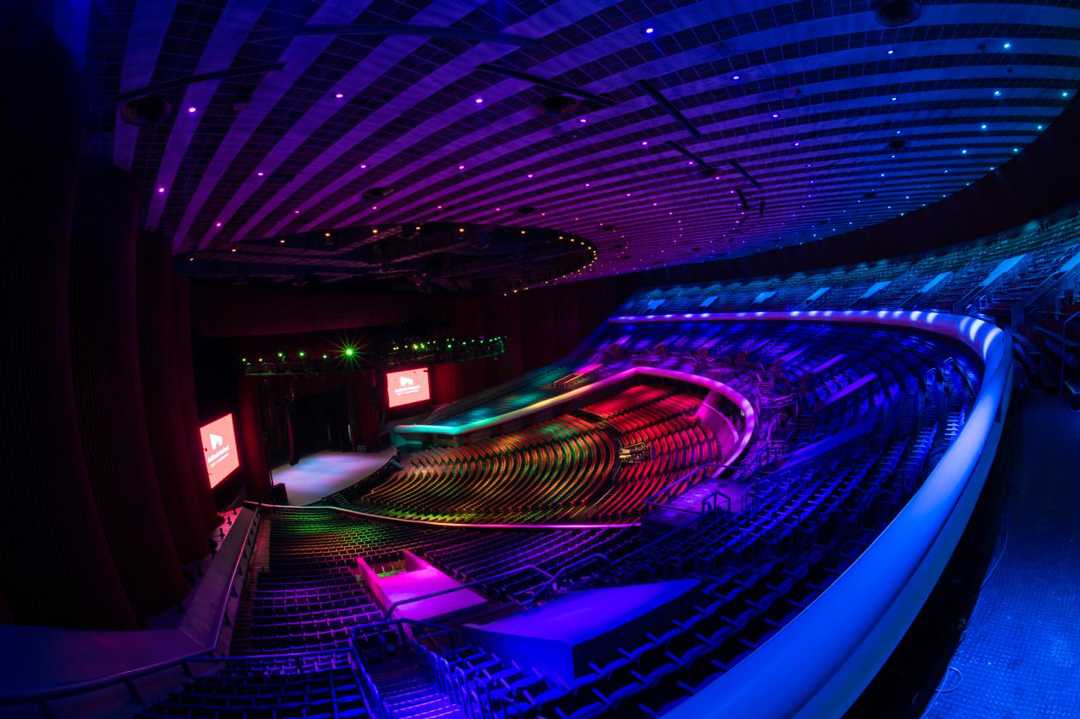Auditorio Nacional installs L-Acoustics system
- Details

The venue’s main hall consists of nearly 10,000 seats raised above and around its 23m stage, primarily used for national and international music concerts, song, dance and film festivals. Since 2013, the Auditorio Nacional has been ranked top selling venue in the world according to Pollstar Magazine.
Lunario, Auditorio Nacional’s alternative stage, seats 1,200 and is used for small and medium-sized events. Both spaces have hosted notable companies such as the Vienna Philharmonic, LA Phil, English National Ballet, Bolshoi Ballet, San Francisco Ballet and New York Philharmonic, Marc Anthony, Alejandro Fernández, Elton John, Sting, Alan Parsons, Michael Bublé and Harry Styles.
The entire facility was recently treated to a renovation, which included an L-Acoustics K Series system to replace the original, 12 year-old sound system. “At Auditorio, we do productions day in and day out,” says Nico Peláez, Auditorio Nacional’s production director. “With some 30 million people attending events here over the past 25 years, we knew it was the time for a major update.”
Four of the world’s top audio brands were invited to participate in the tendering process. To ensure complete objectivity, all companies demonstrated to the AN Board as well as an independent external consultant on the same day. “We developed a transparent process to give each company an equal opportunity in the bidding process,” explains Peláez. “Our listening committee included 12 people from the venue’s audio and production teams, and each member of the committee used a point system to evaluate the same criteria for each system.”
The L-Acoustics K Series, integrated by Vari Internacional scored the highest points and were awarded the project. “The Vari Internacional team were very professional and, together with representatives from L-Acoustics, were able to clearly demonstrate the key benefits of the L-Acoustics K1 system. Two of the key selling points for us was L-Acoustics’ ability to adapt itself to our existing eco-system, as well as its undisputable audio quality. Some of the renowned Mexican and Latin American artists had used K1 at AN, particularly with Luis Miguel performing for 30 nights to over 300,000 people. We had all seen that show and had heard the positive feedback from the audience,” shares Peláez.
For the main stage configuration, Vari supplied two main hangs of 14 K1 with two K2 down and 12 K2 per side for out-fill. Two hangs of eight K1-SB subs are flown behind the K1, with a further two stacks of four KS28 subs positioned left and right on the stage floor. Front-fill is delivered by eight X12 placed in front of the stage lip. Two A15 Focus and two A15 Wide per side provide side-fill for the monitor system. Delays are catered for by two arrays of six Kara(i).
The entire system is powered by 39 LA12X and seven LA4X amplified controllers Four P1 processors are used for AVB distribution to the amplified controllers. Finally, the stage monitoring package comprises two ARCS Focus and 22 X15 HiQ.
The Lunario system comprises two main hangs of six Kara and two SB18 subs per side, with four SB28 subs hidden beneath the stage. Twenty short-throw X8 coaxial enclosures were supplied and used as stage monitors and front-fill as needed, with four A10 Wide and four KS21 subs for side-fill. Nine LA4X and one LA12X provide power and control, along with two P1 processors.
The entire audio system supports analogue and digital using AVB/Milan protocol to simplify audio and control data distribution and offer guaranteed quality without dropouts in a live sound reinforcement system.
















